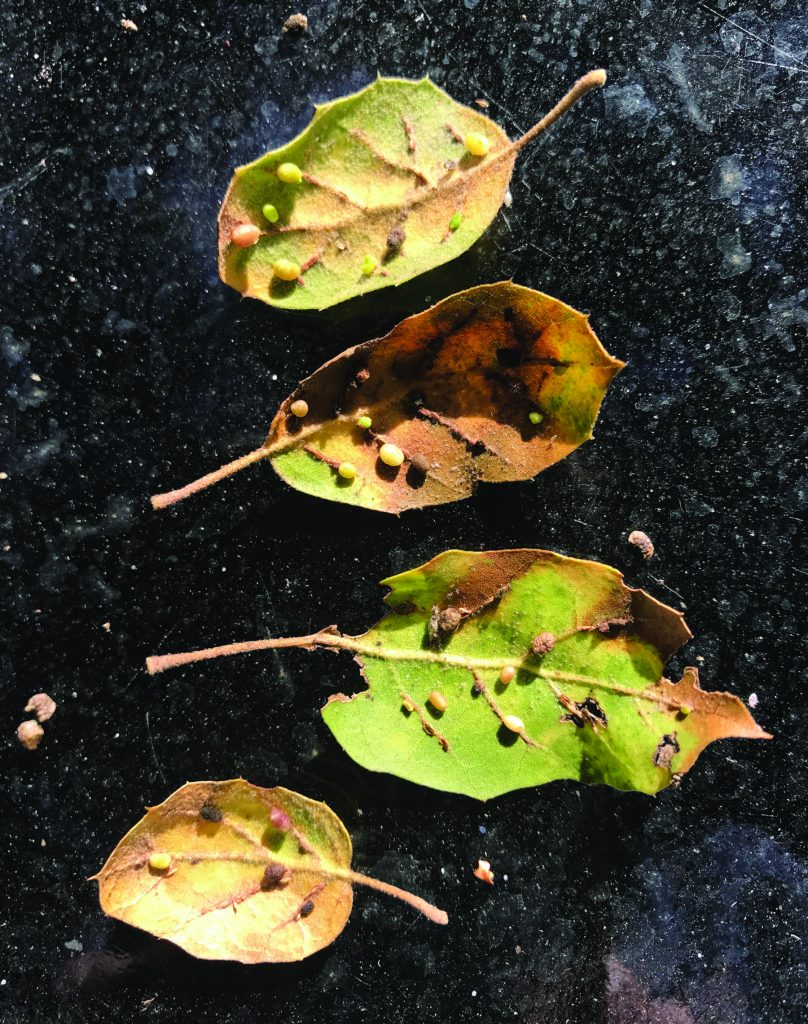by Rebecca Latta
If you have evergreen live oaks Quercus agrifolia (coast live oak) or Quercus wislizeni (interior live oak), you might have noticed unusual leaf-drop this winter, along with thousands of small pellets that look like BB shot collecting on your driveway and patio. You might have stepped under your oak tree, and heard those pellets dropping like rain.

Leaf galls form on the back of live oak leaves in the second generation of the twohorned gall wasp’s lifecycle.
What you’re experiencing is an unusual population explosion of tiny wasps that specialize in oak trees: twohorned oak gall wasps, Dryocosmus dubiosus. The pellets are tiny leaf galls, formed by the tree in reaction to the wasp’s eggs laid in leaf veins. Magnified, these galls have two small protuberances. So it’s the galls, not the wasps, that earned the name “twohorned.”
An insect with an extraordinary lifecycle, this tiny wasp passes its life mostly unnoticed, high above in the tree canopy. These wasps undergo two generations per year. In the first generation, wasps lay eggs in oak flowers (catkins), causing small galls to form on the blooms and along the edges of new leaves. Larvae feed inside the galls. In the second generation, eggs are laid in midrib and lateral veins on the underside of leaves, causing the tree to form tiny galls. Larval wasps overwinter as pupae in these galls, which often drop from the leaf.
Gall wasp populations vary naturally from year to year, but unusually high populations sometimes occur, causing noticeable yellowing of leaves and premature leaf drop in evergreen oaks. Most infestations are not considered threatening to tree health since twohorned oak gall wasps often kill only parts of a leaf. Unaffected leaves will survive on the same twig, unlike damage caused by fungi that cause oak twig blight and twig girdling beetles, which cause the entire leaf to die.
The good news: Gall wasp numbers are controlled by a host of natural enemies. Fungi, parasites, predators, and competing insects (primarily moth larvae and other wasps) share the gall and kill the wasps and their larvae.
No control for oak gall wasps is known or recommended, however it’s wise to promote good tree health by protecting oaks from stress. Don’t over-prune or over-water. Allow natural leaf litter to remain in place, protecting roots from heat and providing natural fertilizer. Water oaks in times of drought. Although aesthetically undesirable, don’t worry about oak gall wasps: nature will take care of them.
Call your professional arborist if you have questions and for a refresher course on best practices to preserve your oak’s good health.
